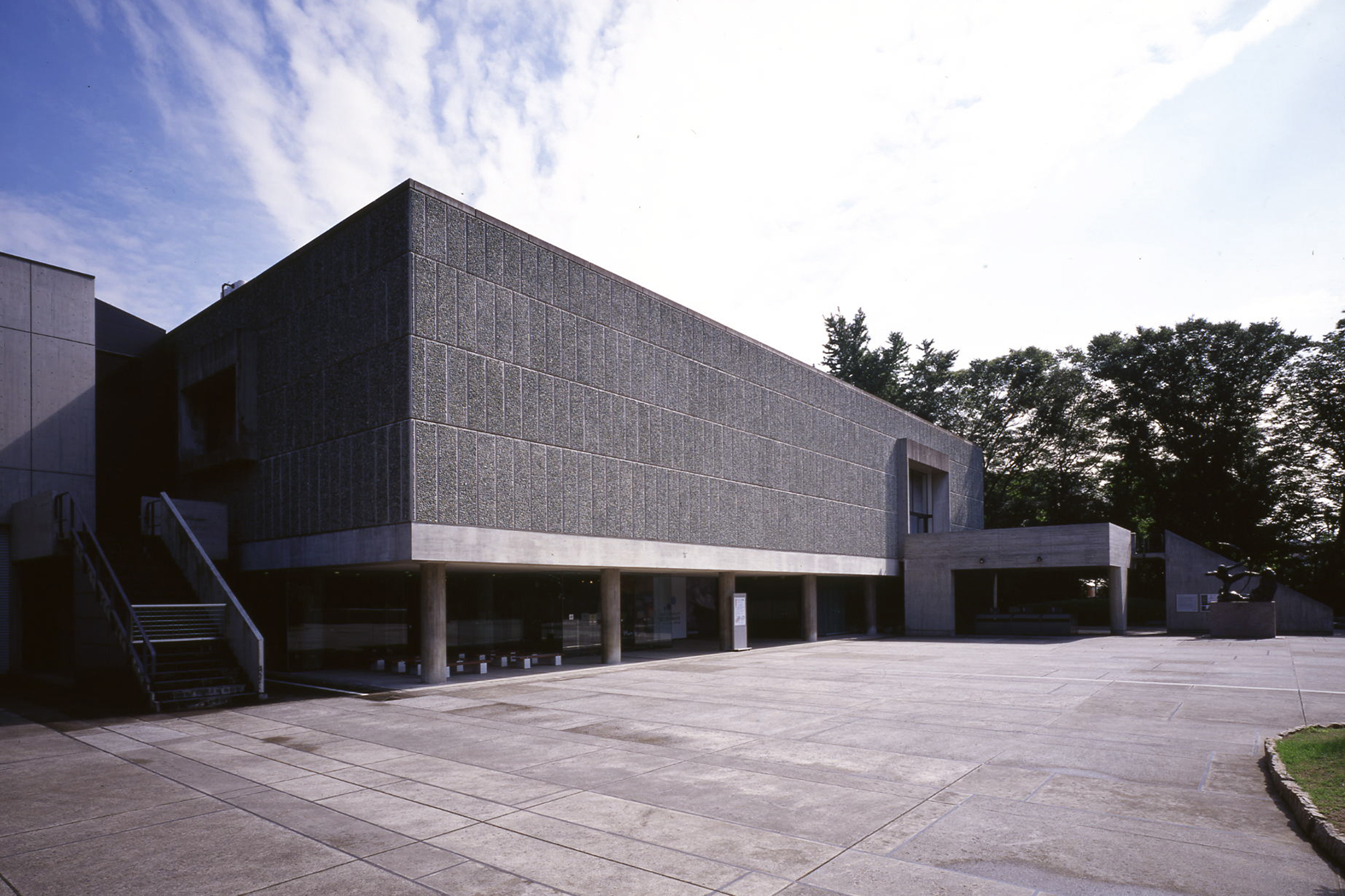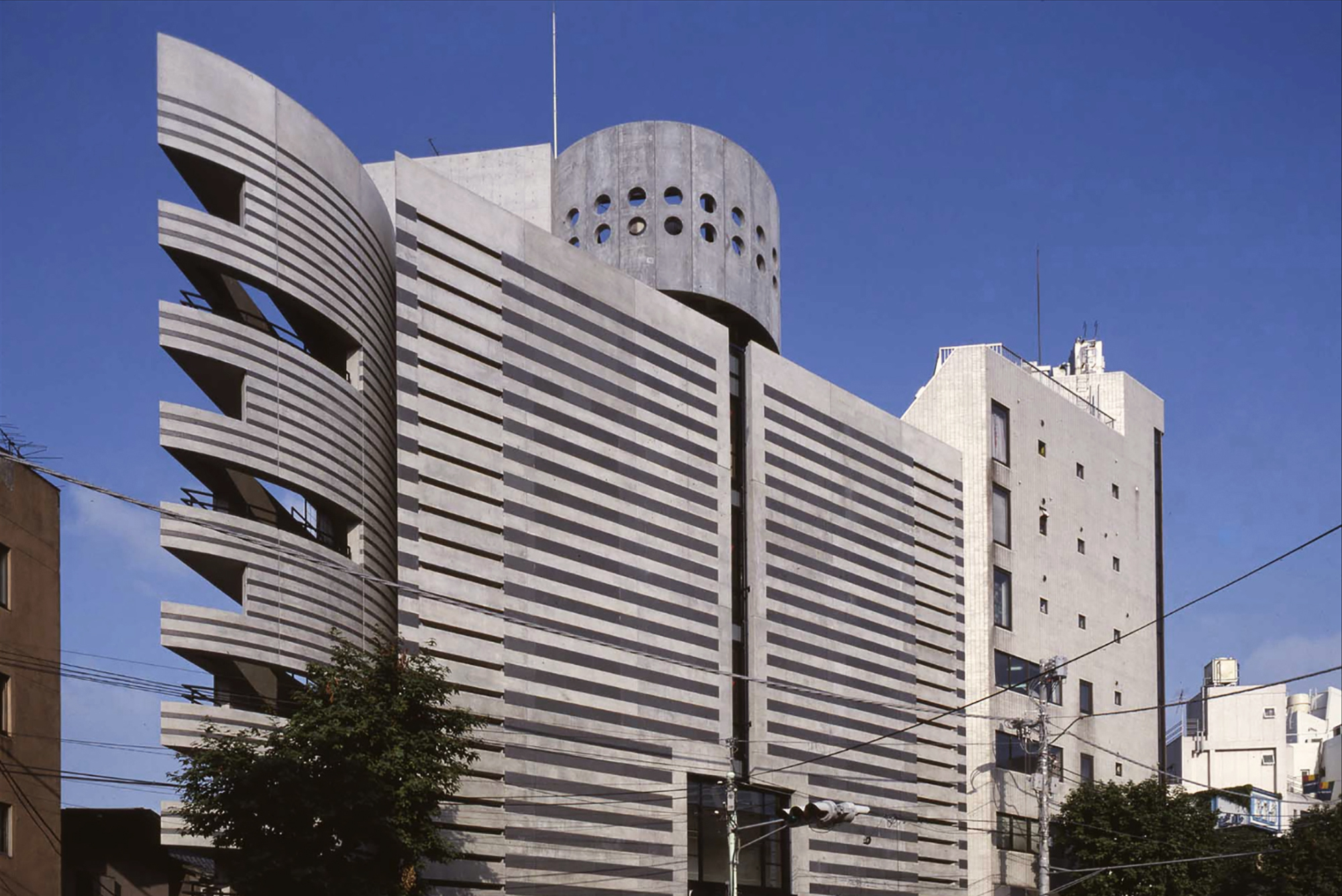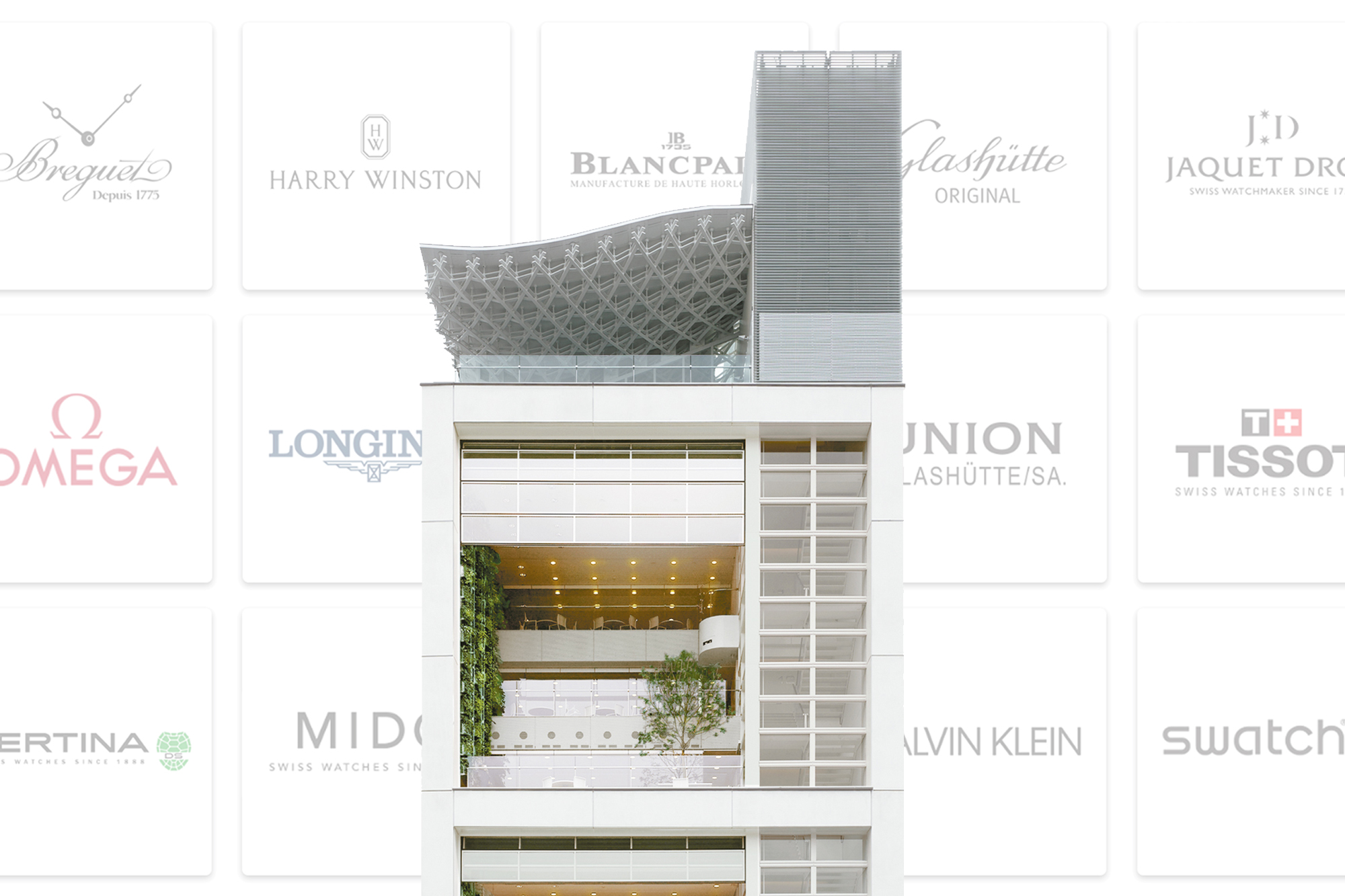-
 Miu Miu Aoyama, Tokyo (©Nacasa & Partners Inc)
Miu Miu Aoyama, Tokyo (©Nacasa & Partners Inc)
Miu Miu Aoyama
Kanto | Tokyo - Minato Ward
Architecture & Design
Have you noticed the latest building by acclaimed Swiss architects Herzog & de Meuron in Tokyo? If yes, then you may want to learn about the fascinating subtleties of its conception. If not, how about a little tour?
In the shadow of a giant
Contrary to expectations for a site that is home to so many luxury brands, Miyuki Street in Aoyama Tokyo (Minato-ku) is not particularly elegant. The architecture is heterogeneous – a hodgepodge of freestanding buildings of different heights and shapes, with neither historical tradition nor common standards. Never meant to be a space of its own, the street is a purely technical and functional link between Omotesando and the Aoyama Reien cemetery farther down the road.
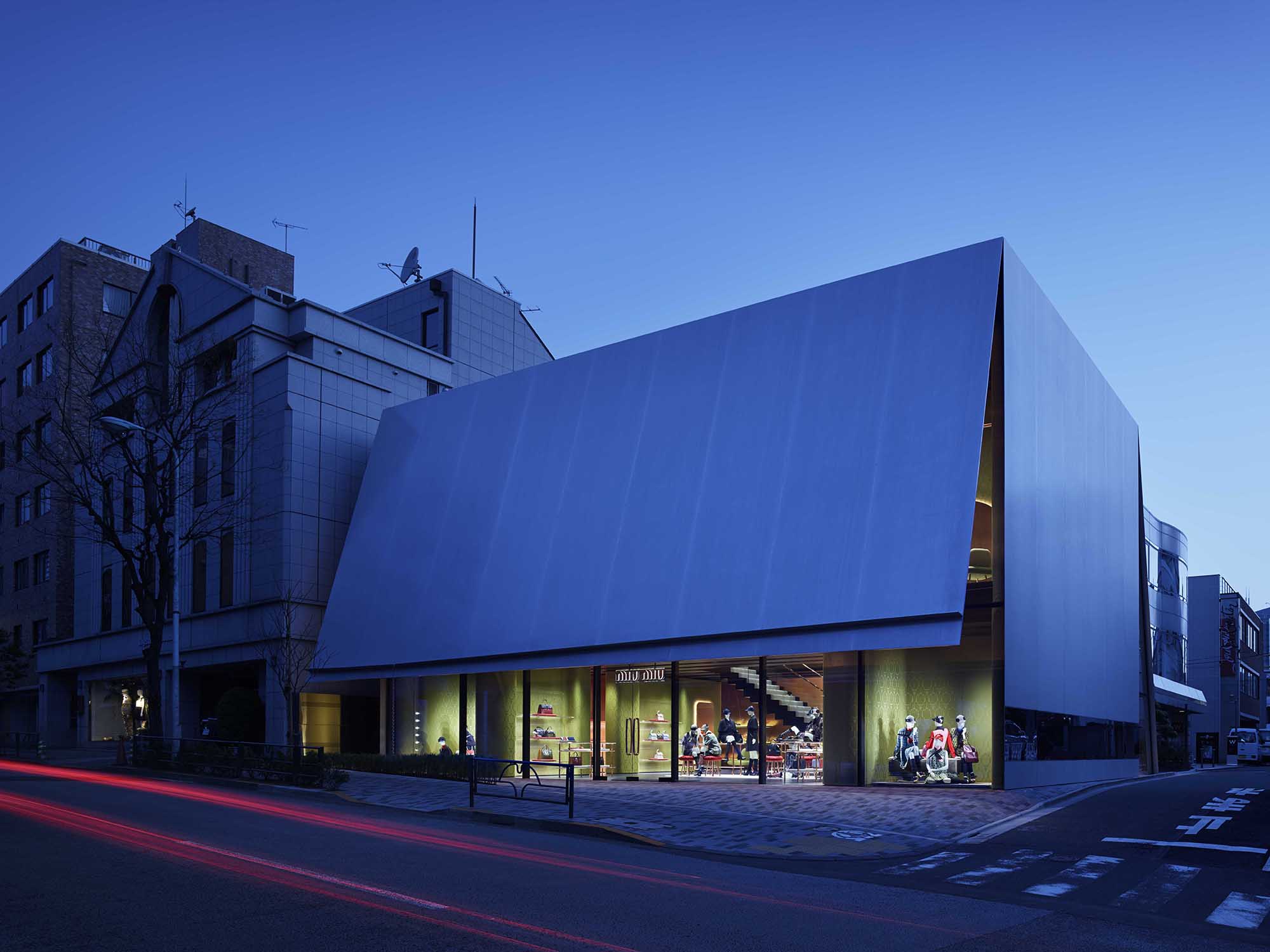
Miu Miu Aoyama, Tokyo (©Nacasa & Partners Inc)
Swiss architects Herzog & de Meuron had already noticed that in the early 2000s, as they were designing the nearby Prada Aoyama store. Between 2012 and 2014, as explained in their project description for the new store commissioned by Italian fashion brand Miu Miu, the office explored the potential of a smaller, more intimate building. Their objective? Providing the street with a human atmosphere that would counterbalance the impressive design of their neighboring first creation. They used the following thoughts to channel their ideas: more like a home than a department store, more hidden than open, more understated than extravagant, more opaque than transparent.
Less is more
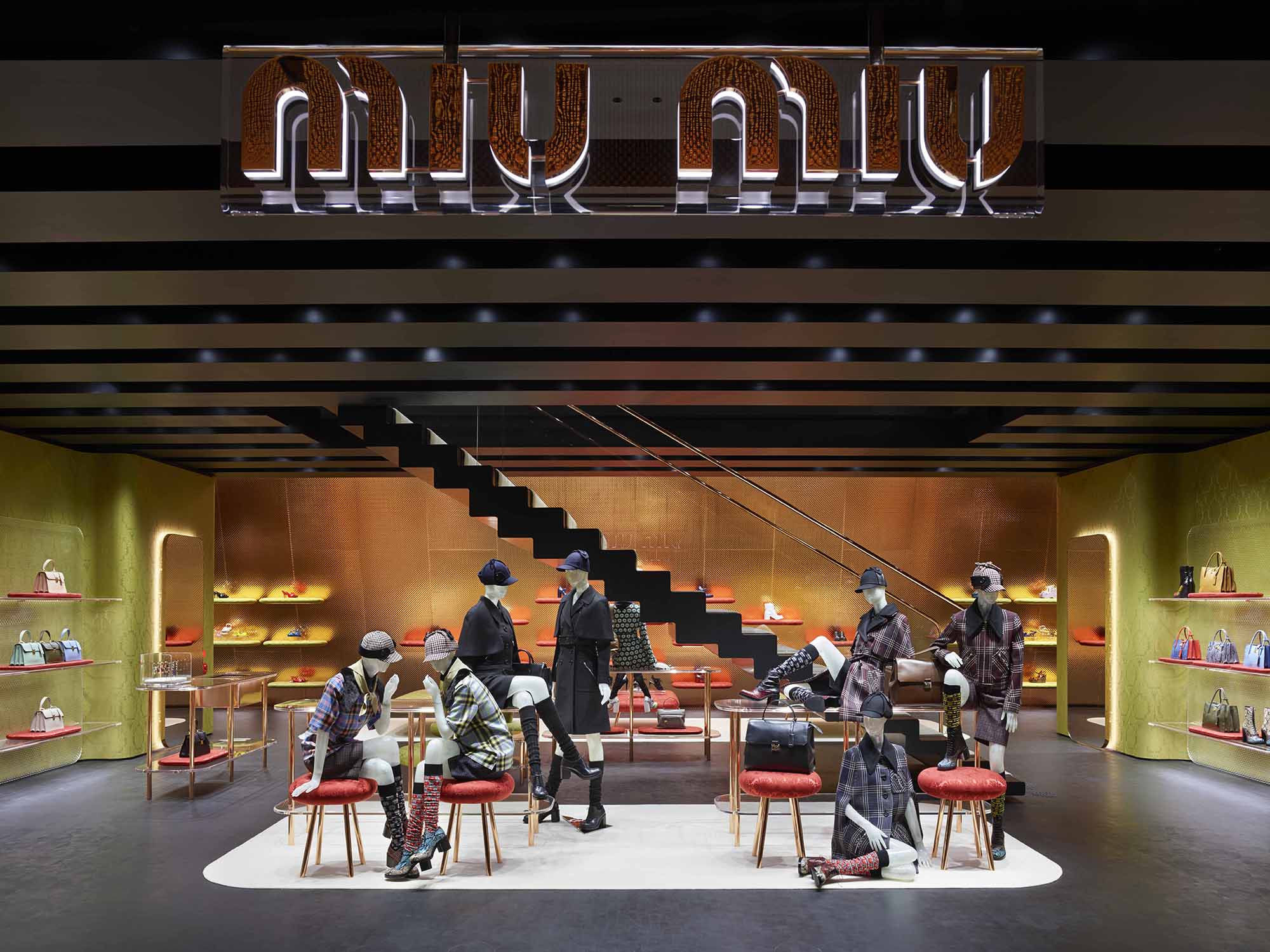
Miu Miu Aoyama, Tokyo (©Nacasa & Partners Inc)
Thus have been the features of the Miu Miu store since its opening in 2015. In the architects’ own words, the typological model that best suited these considerations and specifications was a box placed directly at the level of the street, with a cover slightly open to mark the entrance and allow pedestrians to look inside. Only then do passersby realize that the building is a shop. Under the oversized canopy, the two-storey interior is visible at a single glance, as if the volume had been sliced open with a big knife, turning the inside out.
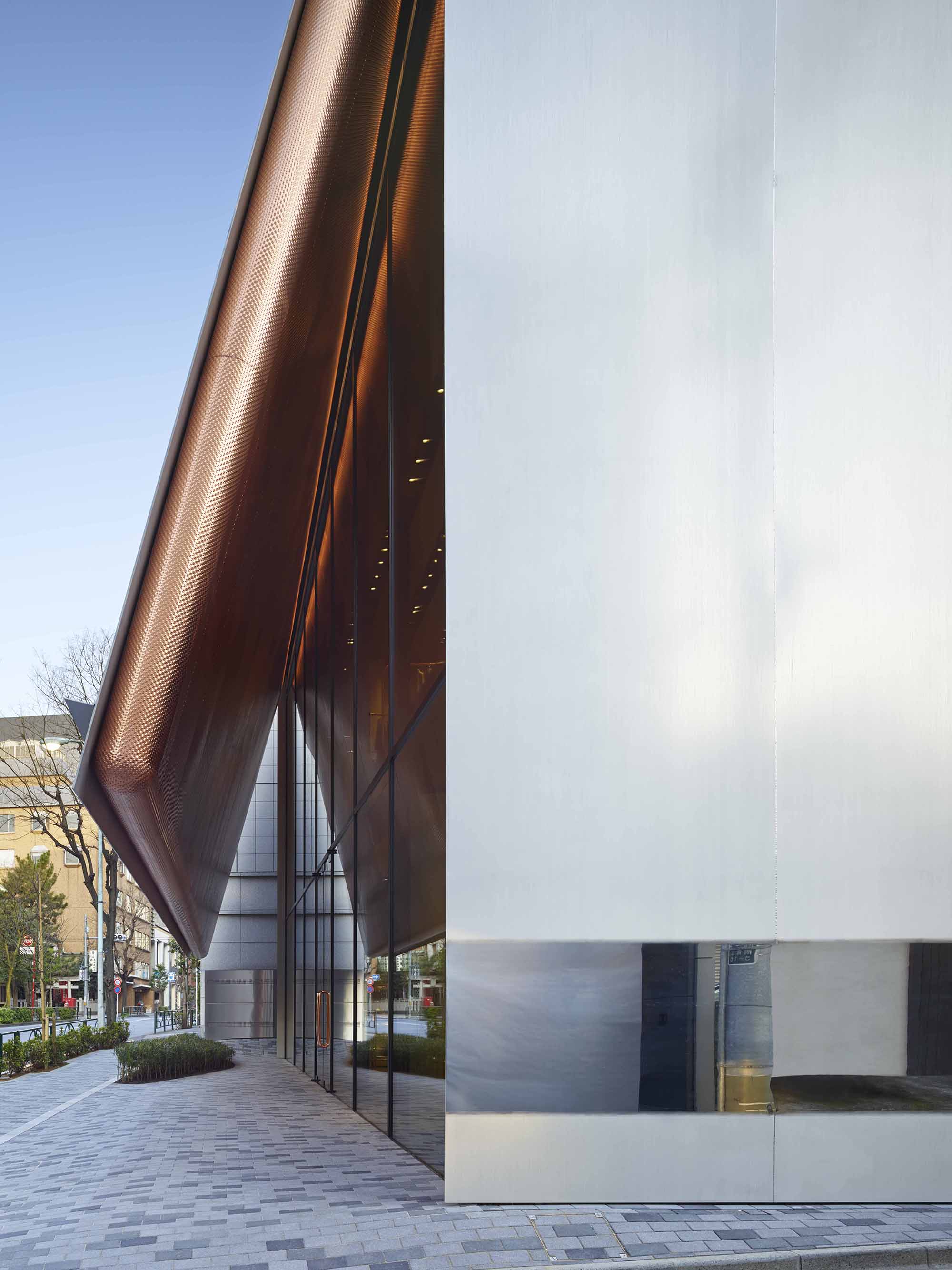
Miu Miu Aoyama, Tokyo (©Nacasa & Partners Inc)
The rounded, soft edges of the copper surfaces inside meet with the razor-sharp steel corners on the outside of the metal box, while the cave-like niches clad in brocade face the central space of the shop like loges in a theatre. The shop on two tall storeys not only presents enticing goods on tables and in display cases; it is also like a spacious and comfortable home with inviting sofas and armchairs.
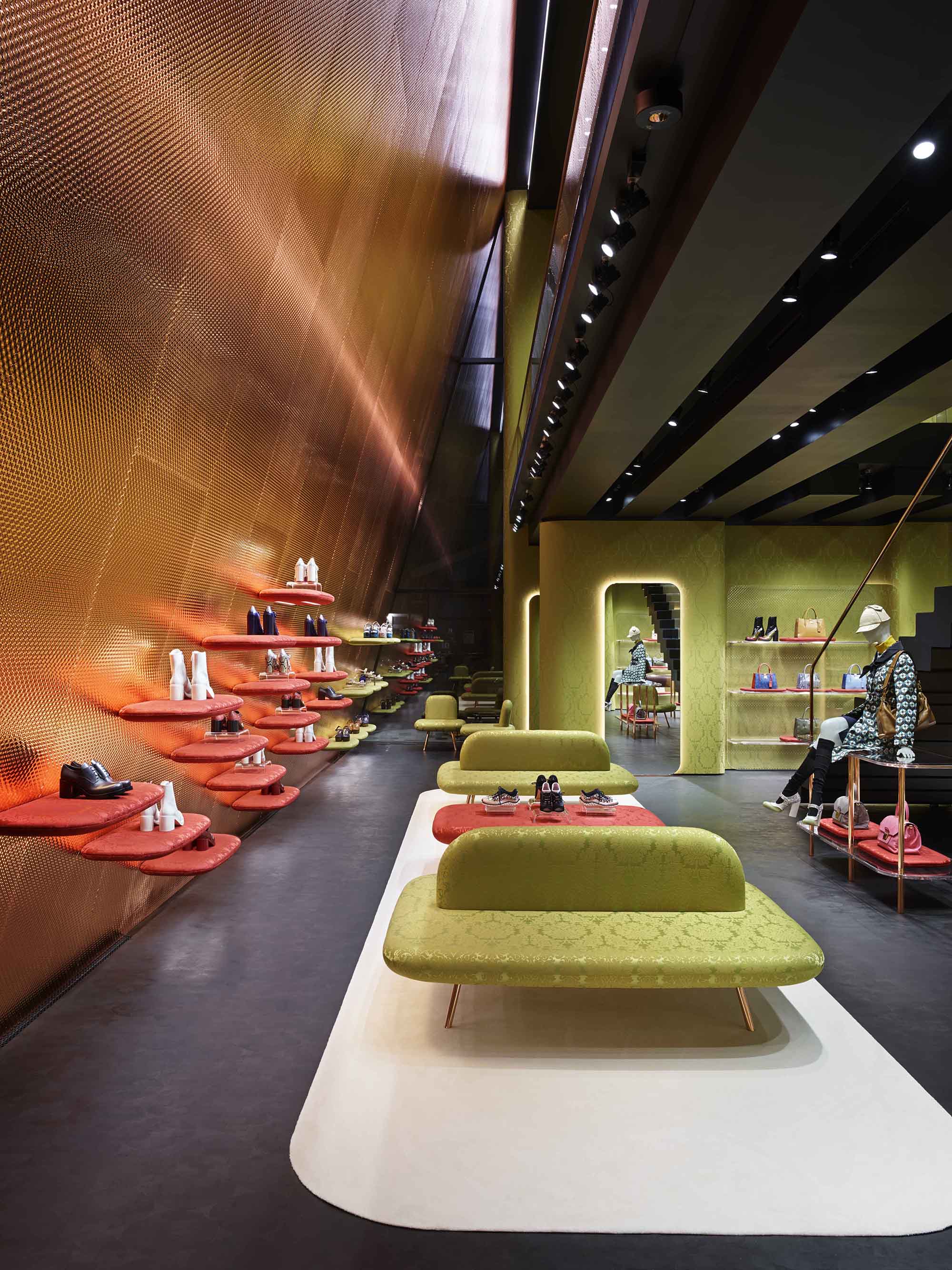
Miu Miu Aoyama, Tokyo (©Nacasa & Partners Inc)
Last but not least, Herzog & de Meuron describe the building’s facade by emphasizing its lacks of logos or pomp; it is an understated, metallic, polished surface, as if one single giant brushstroke had swept smooth the ordinarily matte surface of the steel paneled facade. This surface attracts the gaze and curiosity of passing pedestrians. However, instead of affording a view inside as in a shop window, the gaze is inverted, as viewers encounter self-reflection.

Miu Miu Aoyama, Tokyo (©Nacasa & Partners Inc)
About Herzog & de Meuron
Jacques Herzog and Pierre de Meuron established Herzog & de Meuron in Basel in 1978. Together with 5 senior partners, 5 partners, 44 associates and about 450 collaborators, they work on projects spanning across Europe, the Americas, and Asia.
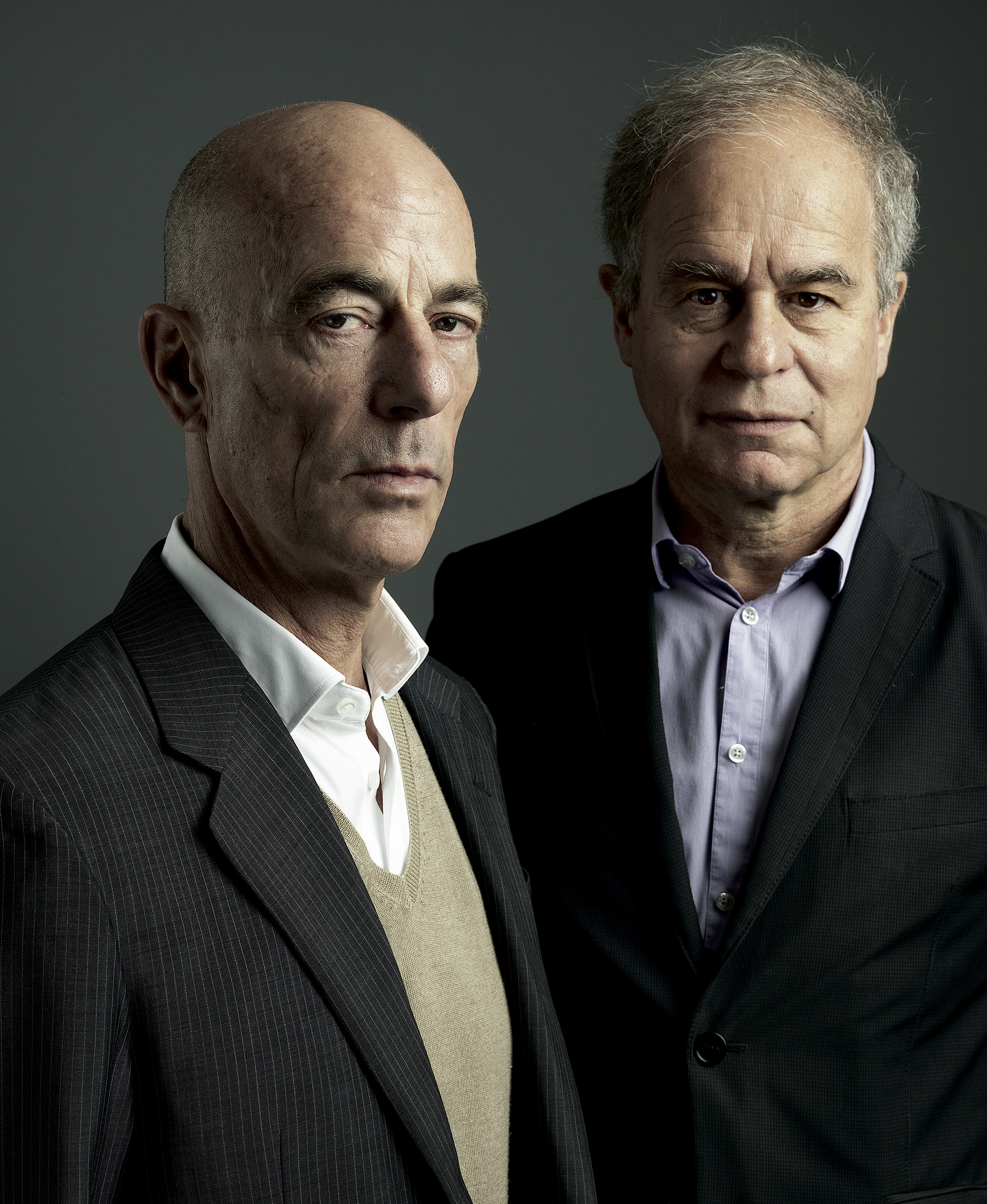
Jacques Herzog (L) and Pierre de Meuron (R) (©2011, Marco Grob)
The practice has designed a wide range of projects from the small scale of a private home to the large scale of urban design. Many projects are highly recognized public facilities, such as stadiums, museums, concert halls and hospitals including the Elbphilharmonie Hamburg, the National Stadium in Beijing, Schaulager in Basel, and the Tate Modern in London. Currently, Herzog & de Meuron is working on over 50 projects worldwide, including M+, a new museum for visual culture in Hong Kong, the Children’s Hospital in Zurich and the National Library of Israel in Jerusalem.

Elbphilharmonie, Hamburg (©Maxim Schulz)
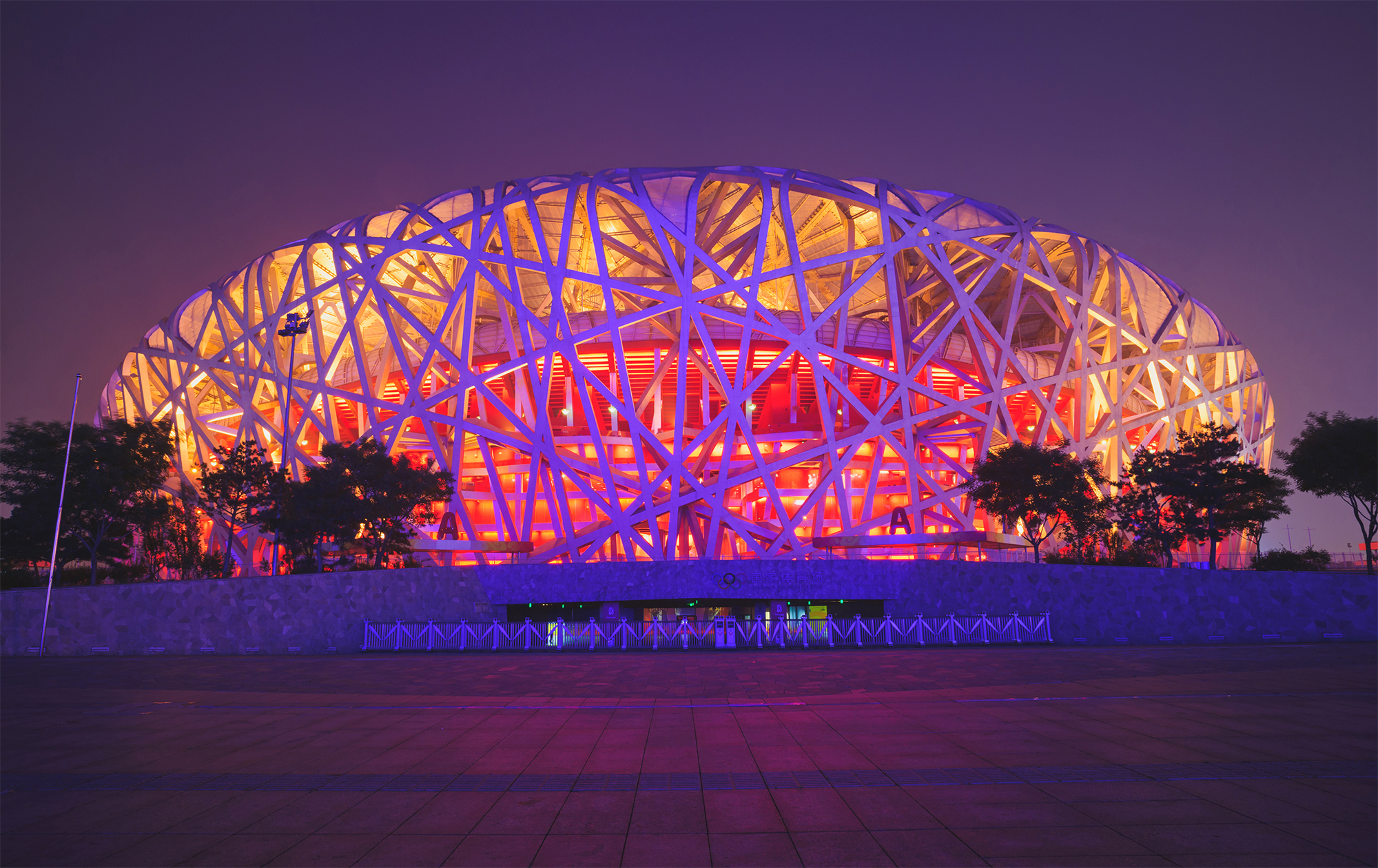
National Stadium, Beijing
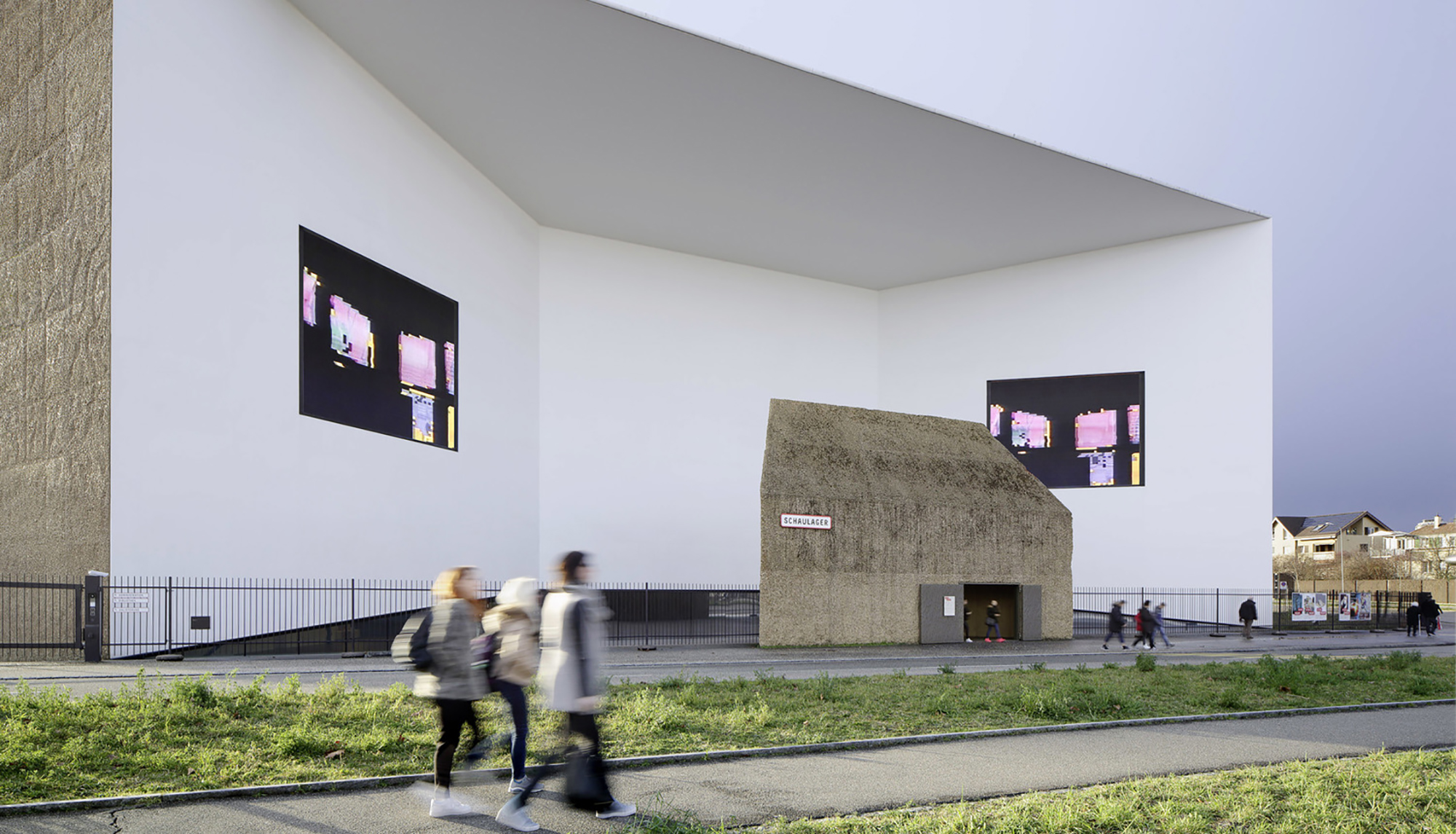
Schaulager, Basel (©MünchensteinBasel / Tom Bisig)
For their outstanding contributions to architecture and urbanism, Jacques Herzog and Pierre de Meuron have been awarded numerous prizes including the 2001 Pritzker Architecture Prize (USA), the 2007 RIBA Royal Gold Medal (UK) and the 2007 Praemium Imperiale (Japan).
Links
- Herzog & de Meuron
- Miu Miu Store (project description)
- Elbphilharmonie Hamburg (project description)
- Beijing National Stadium (project description)
- Schaulager
- Laurenz Foundation (project description)
- Tate Modern (project description)
- M+ (project description)
- Zurich Children’s Hospital (project description)
- National Library of Israel (project description)
- Architecture in Switzerland
